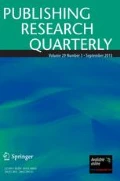Abstract
The objective of the present study is evaluation of the authored Persian Fictions selected by Flying Turtle Award using Flesch and Gunning formulas in first chapter books (ages 7–10), middle-grade books (ages 8–12) and young adult (YA) (ages 12 and up). This is a survey study with the population of 25 Persian authored Fictions selected by Flying Turtle Award. In this study the researchers seek to perform calculations and collection of data related to research questions using two Flesch and Gunning formulas. Out of which, 2 authored fictions were in first chapter book category, 14 books in middle-grade category, 9 books in first chapter and middle-grade categories and 1 book in middle-grade and YA category. The results obtained from Gunning formula show that this formula overlaps with authored fictions selected by Flying Turtle Award up to 76% and incompatible with these books up to 24%. The results also obtained from Flesch formula show that this formula overlaps with authored Fictions selected by Flying Turtle up to 72% and is incompatible with them up to 28%. As far as the appropriate books for children have significant role in their nurturing and mind, determination of the readability level of these books in terms of conformity with various age groups seems to be necessary. In addition, the results of this study could help the selectors of books for Flying Turtle Award in selection of appropriate books for children. As far as the books selected by Flying Turtle Award have been listed on the basis of specific principles and criteria, the researchers decided to make a more precise assessment of the readability level of these books using Flesch and Gunning formulas.
Similar content being viewed by others
Notes
A report entitled, "The publication of children books has some other problems in addition to the problems of publication industry". Retrieved on 22 June 2012, accessible from http://www.ibna.ir/fa/doc/tolidi/141291.
References
Ayodele MO. A comparative study of text book readability and student’s comprehension level in senior secondary biology. J Educ Soc Res. 2013;3(1):109–14.
Azarang A. The introduction of book publishing. Tehran: The Organization for Researching and Composing University Textbooks in the Humanities (SAMT); 2001.
Carapella JA, Readability of the common core standards 11-CCR text exemplars: a text sequence reference guide. Master of Science in Education Department of Curriculum and Instruction State University of New York University at Fredonia Fredonia, New York (2012).
Dayani MH. Evaluation of readability of Persian texts: readable writing for kids, novice literate and adolescents. Mashhad: Computer Library; 2000.
Gunning R. The technique of clear writing. New York: McGraw-Hill; 1968.
Homachandran AR, Creative picture book theory, Translated by: F. D, Poyesh, 1989.
Flesch Reading Ease Readability Score. http://rfptemplates.technologyevaluation.com/readability-scores/flesch-reading-ease-readability-scorehtml.
Ibrahimi N. An introduction on Persian writing for children. Tehran: Agah Publication; 1995.
Kandula S, Zeng-Treitler Q, Creating a gold standard for the readability measurement of health texts. In: AMIA. Annual symposium proceedings. AMIA symposium, 2008; p. 353–357.
Karbassi A, Parirokh M, Sanaat-Joo A. Pathology of market picture books for children of age A and B. J Libr Inform Res. 2016;6:301–20.
Kasule D, Textbook readability and ESL learners. University of Botswana. Readability Formulas: free Readability tools to check for reading levels, reading assessment and reading grade levels. http://www.readabilityformulas.com/gunning-fog-readability-formula.php (2010).
Maleki B, The printing of market books has become the priority of many publishers. Retrieved on 1 March 2014, http://www.irna.ir/fa/News/81154958 (2014).
Qezel-Iaq S. Children’s literature and reading promotion. Tehran: The Organization for Researching and Composing University Textbooks in the Humantities (SAMT); 1998.
Tarhande S. Absurdism and obscenity in text and image. J Child Adult Mon Book. 2009;135:39–49.
Yahyipour M, Kermani A. Content analysis of market books based on the fictional characters of children’s and adolescent books in the first half of 1997. J Child Adolesc Lit. 1998;13:14–47.
Yar-Mohammadi M. The study of the readability test of Persian texts based on proposed formula proposed by Mohammad-Hossein Dayani. Tehran: Research and Evaluation Department of Continuous Education Management; 2002.
Author information
Authors and Affiliations
Corresponding author
Additional information
Publisher's Note
Springer Nature remains neutral with regard to jurisdictional claims in published maps and institutional affiliations.
Rights and permissions
About this article
Cite this article
Khademizadeh, S., Vaezi, M.R. Evaluating Readability of Persian Fictions Selected by Flying Turtle the Iranian Award. Pub Res Q 36, 116–128 (2020). https://doi.org/10.1007/s12109-019-09705-0
Published:
Issue Date:
DOI: https://doi.org/10.1007/s12109-019-09705-0




